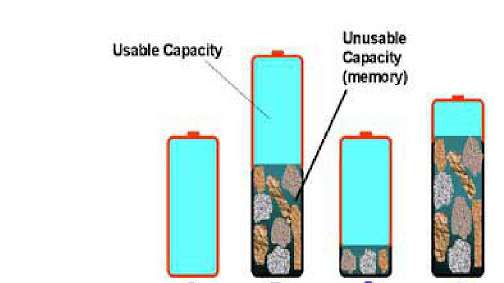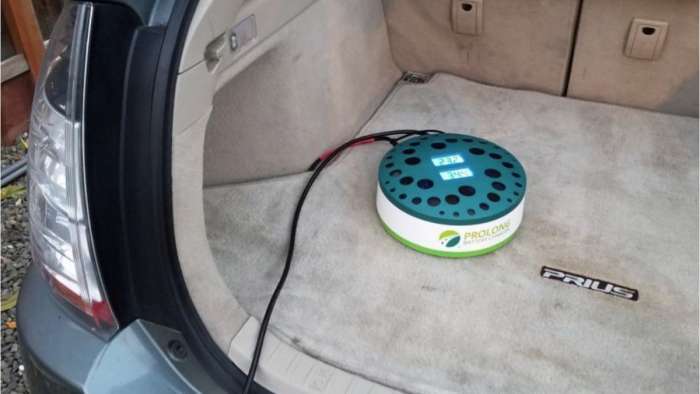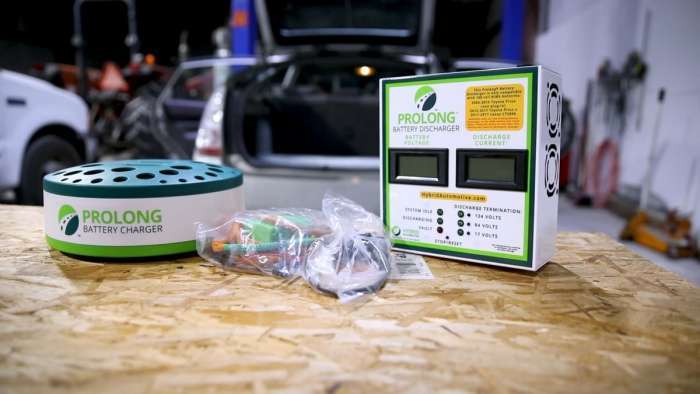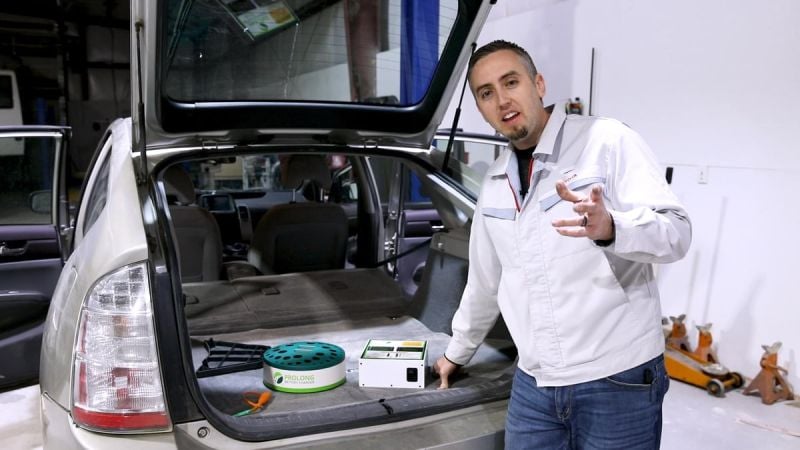Look, if you think this is snake oil, do yourself a favor and move on. I am not here to waste my time or yours. I am here because there is a need to help every hybrid owner on the planet get more out of their car. The makes of hybrids include but are not limited to Toyota, Honda, Lexus, and Ford.
What I am about to tell you is backed by science, research, and engineering. The product works, if it did not, there would be absolutely no market for refurbished hybrid batteries. Here is what you need to know about the free training on doubling the expected life of your hybrid battery.
Why The Prius And Other Hybrid Batteries Fail
Before you start thinking about fixing and extending your Prius hybrid battery, first consider why hybrid batteries fail. I am going to keep this as simple as straightforward as I can. The first thing you need to know about why hybrid batteries fail is the material from which they are constructed. The most popular hybrid battery is still Nickel Metal Hydride, though newer battery technologies are coming forth.
Nickel Metal Hydride Or NiMH, for short, is a sibling to another battery called Nickel Cadmium or NiCad. Remember being a kid playing with your remote-controlled car? Many of those power sources were NiCad. While it was a robust source of energy, it had one massive fatal flaw: voltage depressions, or as we know it, memory wear.

Voltage depressions caused our playtime to get cut short. Why? The capacity of the battery would diminish as we cycled the battery. The cycling process causes crystalized formations to appear slowly, reducing the amount of usable battery capacity — boom, Science.
The solution to the NiCad problem was NiMH. Immediately hailed as the savior to the memory wear problem, NiMH became the new battery technology that would bring forth an entirely new generation of electronics, and it did.
The Toyota Prius was born using NiMH and has kept using it for over 20 years now. Why? NiMH is used because it can be charged quickly and cycled thousands of times and keep on ticking. It is very robust, and it makes for an excellent power source. Aviation uses it because they loved how durable NiCad was, and NiMh proved to be even better.
Initially, NiMH made sense; it did everything we needed it to do until the Achilles heel of this tech became known. Like is predecessor, NiMH eventually fell victim to a very similar form of voltage depressions, though not as severe. So, now what? That is just the question Dave Taylor asked when he faced this issue with generation one Prius.
Who Is Dave Taylor, you ask? Well, my friends, Dave, is a legend. I cannot tell you too much about him other than he was a forefather of figuring out why these battery packs were failing. Dave learned that these voltage depressions were similar to what NiCad batteries had been facing for years. He then set to work to find the solution.
The Solution To The Problem
Dave worked tirelessly to come up with a plan on how to service these high-cost battery pack units. Dealers were charging close to 5,000 dollars to replace packs out of warranty. That is when battery repair was born. Dave Taylor, along with a company, Automotive Career Development Center (ACDC), founded the first hybrid battery reconditioning process that has since exploded into a multi-million dollar industry.

Why did it take off? Because the method that I am about to tell you worked. It saved Prius owners thousands of dollars, and the process works on every NiMH battery out there. Boom, research.
The River Of Silt
I want you to stop and think of a river with running water. I want you to then think of a 5 gallon Home Depot bucket. I then would ask you kindly to mentally place the bucket in the water where the river can flow into it. Visualize the bucket filing with water and spilling out. Periodically you pull the bucket out to use the water then place it back in the river to allow it to fill up again. The process happens for years on end.
One day you pull the bucket out and notice that the amount of water you used to be able to get out of the bucket is no longer the same. You look in the bucket to figure out what is going on. Only to find that over three-fifths of the bucket is filled with silt. Your bucket no longer serves you the same because the 5 gallons you used to get is now has only two gallons worth of useable space.

So what would this cause? Well, if you wanted to keep using that bucket, you would need to fill the bucket more often, making you work more. A similar process is what happens to your hybrid battery modules as they age and wear. These acts are why your Prius runs more often when the battery is failing, why the fuel economy suffers, and eventually, you get the P0A80 trouble code. Your Prius modules are the buckets; the silt is the voltage depressions, you get the picture.
Okay, now what? Well, I am here to tell you about something that will blow your mind. What if you could restore that capacity to your bucket by just scraping out the silt? Well, I am here to tell you that it is possible, and what is even better, there is a process to do this with your battery.
The Process
Silt in the bucket equals reduced capacity. Voltage depression in batteries equals reduced capacity. So how do you clean out a battery module to help restore what was lost? Excellent question.
The process of battery cycling is not new; it just is not something your Toyota dealer is going to tell you to do. They want to sell you a high-cost battery. They want your money. That is why no dealer will endorse battery maintenance; it is terrible for new car sales.

The process thoroughly explained in detail is available through a link at the end. Simply stated, you need to fully charge and discharge the battery multiple times in a controlled manner to "dig out" the silt or clean out the crystal formations in the modules. It sounds easy, and it is, but you need to know all the details before just diving in and doing it for yourself. Boom, engineering.
This Free Training Will Show You What To Do
Look, I am here to tell every hybrid owner, ever that you can keep your battery longer by using the same process that the pros do to fix yours when it breaks. Think about it, if every time a hybrid battery went bad, and we could only replace it with a new one, how wasteful would that be? It would completely negate owning a hybrid car.
That is why there are multi-million dollar battery repair and reconditioning services. There is a demand for these packs to have more life given to them. That is why it is so important to start as early as you can if you want to prolong the life of your hybrid battery.
Conclusion
Hey, listen, this is science, the stuff in here is based on real-world results and studies done to real hybrids. Just check out the training and see what it can do for you.
Ask yourself, if it only helped you improve your fuel economy by 5 miles per gallon, would it be worth it? If all watching the training did for you was get you to understand more about how your Prius works and why the battery fails, would it be worth it? Of course, it would, and it is 100 percent free to watch. Check out the training right here.
Do the right thing for your Prius, and for the environment, help keep it on the road longer. Prius is made to improve the earth, and we can do that if we come together and learn how to take better care of our cars.
Thank you so much for reading; I promise it will be worth every minute of your time. See you in the next story, How The Toyota Rav4 Hybrid Is Dominating Prius.
Watch the 2021 Toyota RAV4 Plug-in Hybrid Prime video presentation and click to subscribe to Torque News Youtube channel for daily automotive news analysis.
Peter Neilson is an automotive consultant specializing in electric cars and hybrid battery technologies. He holds a Bachelor of Science in Automotive Service Technology from Weber State University. Peter is also an Instructor of Automotive Technology at Columbia Basin College. Peter can be reached on Linkedin and you can tweet him at The_hybrid_guy on Twitter. Find his page on Facebook at Certified Auto Consulting












Comments
Tried to contact this site
Permalink
Tried to contact this site about the battery saver. I've only changed one cell on my battery. The car is currently at 323,720 miles. With a motorcycle tender, i was able to rig to each cell. My out of pocket was like $60. How long does your cells last at a few hundred dollars for your kit? Just asking.
Yes, use the kit and you will
Permalink
In reply to Tried to contact this site by Precher1300 (not verified)
Yes, use the kit and you will see many more miles out of your battery.
I bought a 2nd gen 2009 Prius
Permalink
I bought a 2nd gen 2009 Prius that was heading to the scrap yard because it had a dead hybrid battery. I took out the hybrid battery and replaced a few cells and reconditioned the others to restore capacity and the car runs great now. I hope to get 100K more miles out of it. The Prius has so much life in it if you are willing to put in a little diy work. reuse-reduce-recycle
Excellent point and that is
Permalink
In reply to I bought a 2nd gen 2009 Prius by sean s (not verified)
Excellent point and that is the idea behind using the equipment here. If we reduce the use of virgin materials to make new batteries, that will help everyone on the planet.
You will, as the second
Permalink
In reply to I bought a 2nd gen 2009 Prius by sean s (not verified)
You will, as the second-generation Prius are the best Prius made! I got 147k out of my 2009 prius hybrid battery before I had to replace it. I spent 1570$ including the tax on a new cell hybrid battery installed. The car is a tank and drives great. Had to change the mfd a few times very easy to do and that is about it. Have a passenger side rear window that refuses to go down have to change the regulator cost is about 30$ in parts. I get a 48-53mpg average including summer. Cannot beat that. The car will drive to 500k miles you take care of it.
Enjoy.
Would love to check it out
Permalink
Would love to check it out but cannot find link to do it? Anyone help me? I have a 2012 pruis v.
I know that checking battery
Permalink
I know that checking battery health is important and have brought back battery cells of various chemistries, so I am interested in reading more about this technology but seems to be a broken link.
I would like to recondion my
Permalink
I would like to recondion my batteries. The car has a 160,000 miles and I feel it still can be done. They. Are working very .
I also have a problem in the
Permalink
I also have a problem in the hybrid battery and when the engine stopped changing the battery is still adding some more.i don't know how to respond to that I am just new to this 2nd geration toyota prius
Unless you are charging and
Permalink
Unless you are charging and discharging each battery cell individually, this won't be that effective.
Mainly because the damaged cells have higher resistance so the current will mainly flow to the undamaged cells.
To do this properly you need to charge and discharge each cell individually.
Not saying it won't do SOME good, but it's no where near as effective as a proper reconditioning the cells individually, which means taking the battery unit apart which I would not recommend if you don't have electrical training.
Tengo un Lexus Rx 400h no
Permalink
Tengo un Lexus Rx 400h no sirve la batería hybrid como la reparo
own a 2013 prius plug in and
Permalink
own a 2013 prius plug in and want to know everything I can.
Embark into the epic galaxy…
Permalink
Embark into the epic galaxy of EVE Online. Forge your empire today. Build alongside hundreds of thousands of pilots worldwide. Join now